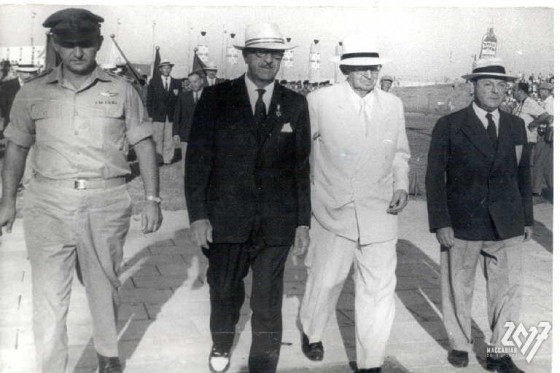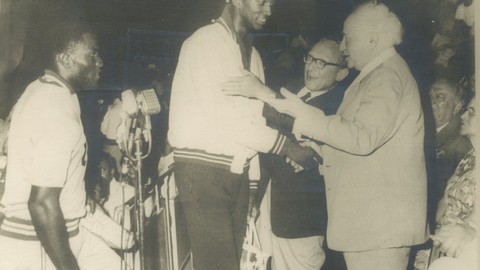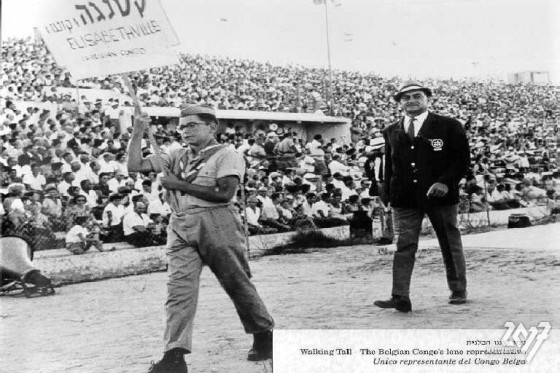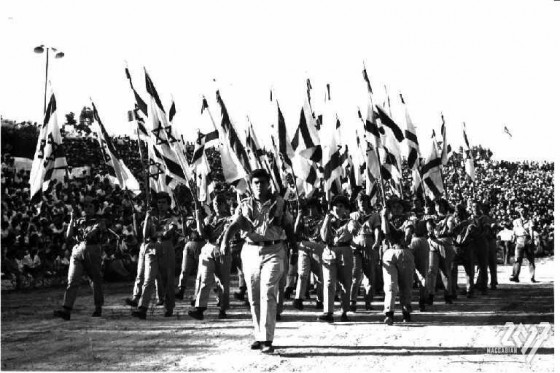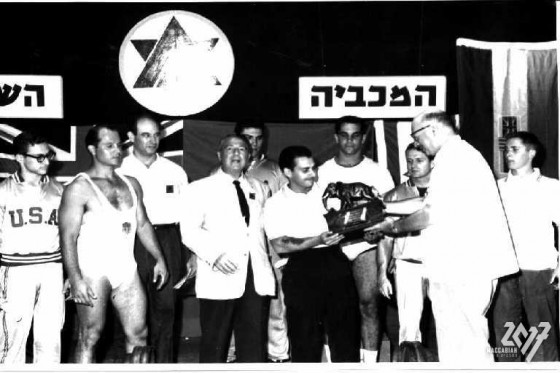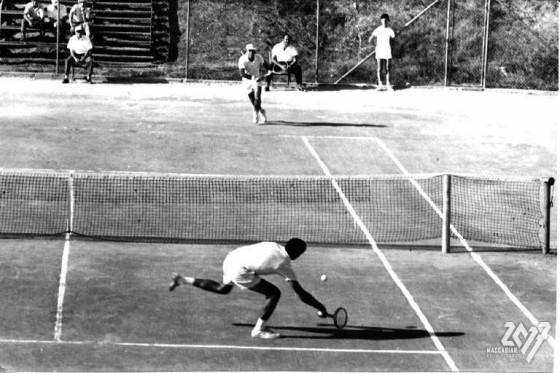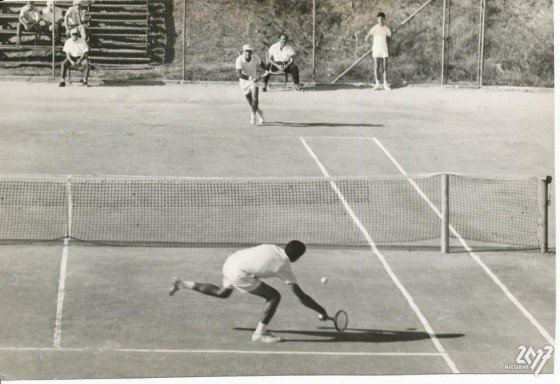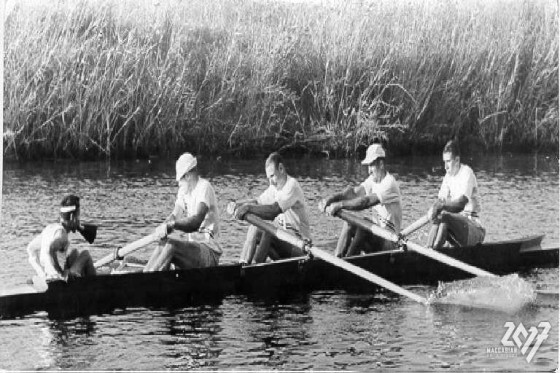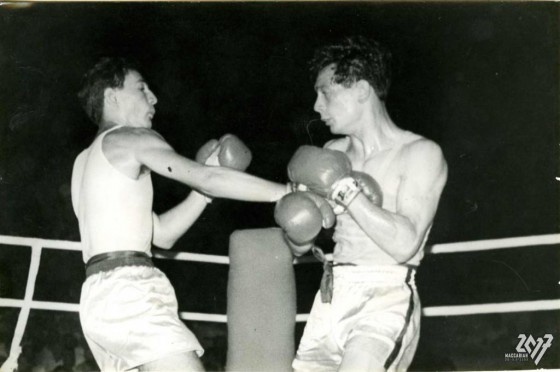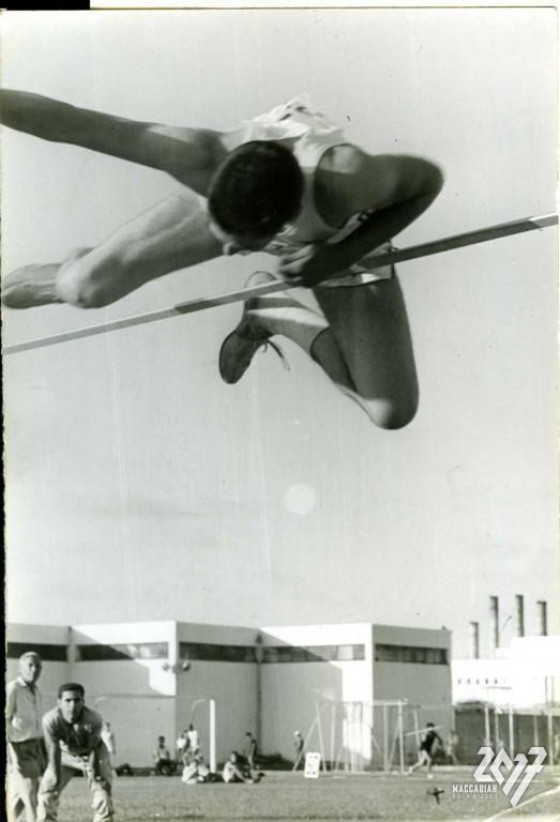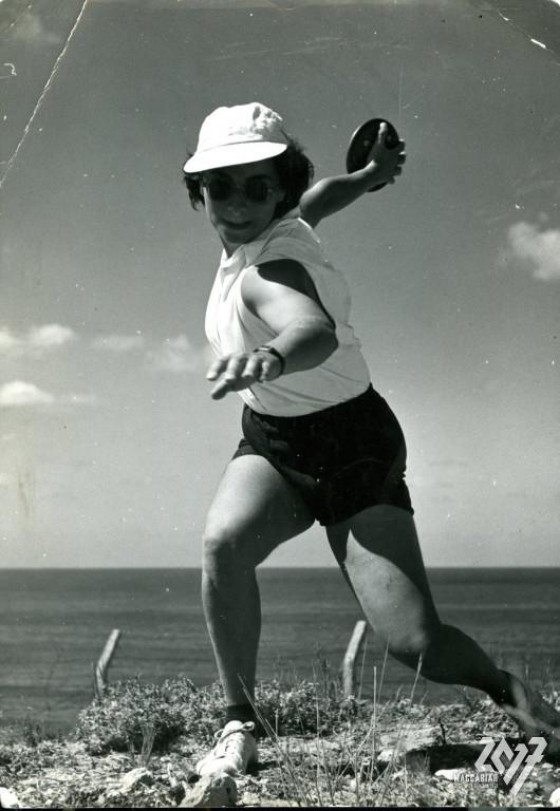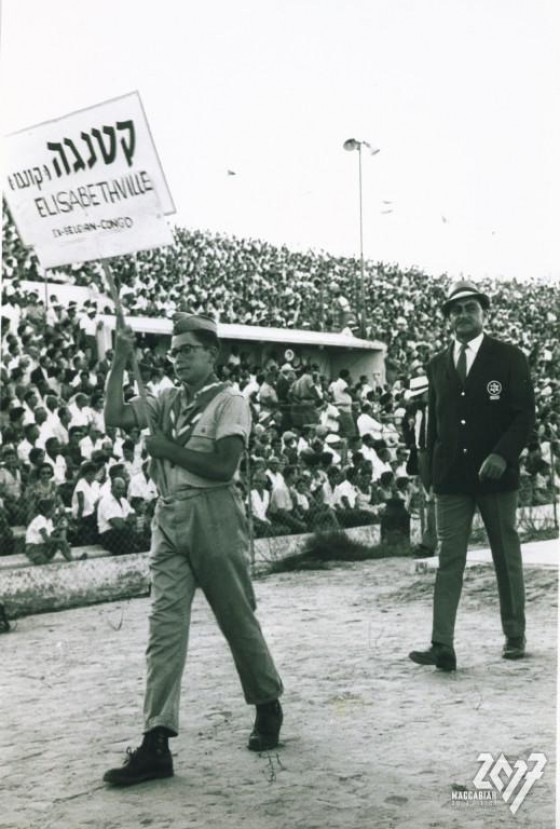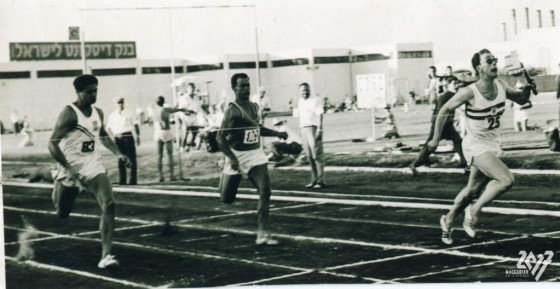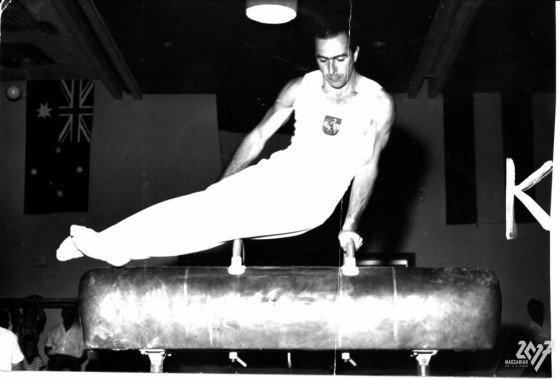
The Sixth Maccabiah 5721
The Sixth Maccabiah was the first to be held at the end of summer vacation so that it would be easier for Diaspora athletes, mainly students, to participate (Heretofore the games had always taken place on Succot so that Israeli school children would be able to perform in the ceremonial pageants.)
This was not the only significant organizational change. For the first time, the Staff and the Organizing Committee operated from Kfar Maccabiah. The Government Sports Authority had been established that year, finally bringing Israeli sports under state protection. Despite its shortcomings, the Authority was very active ׂbehind the scenes׃ (for example in building an excellent racing track patterned along the track at Wingate Institute).
The previous year, the Comite International Olympique had recognized the Maccabi World Union as an organization of Olympic standing, over the strong objections of the Arab States, and the Maccabiah was granted the status of regional games within the International Sports Association. Above and beyond the honor bestowed upon Jewish sports in Israel and the world, this recognition laid a heavy burden upon the Maccabiah organizers. Henceforth, they were committed to running the Games more professionally, adhering to the letter of the International Sports Constitution. Among other things, they were obliged to invite International Sports Association observers to each event. As the date of the Maccabiah approached, a new body, the International Maccabiah Committee (I.M.C.) was established, permitting Israeli sports associations full representation at the Games. Following the conclusion of the Maccabiah the I.M.C. became a permanent body.
30,000 watched as Israel's President Yitzchak Ben Zvi opened the Games. Athletes competed in 20 events, including rowing, which reappeared after a short absenc. Basketball games were held in Ramat Gan Stadium on a portable basketball court made of connecting wooden boards. The special electronic scoreboard, which tallied to the 30th of a second, was transferred to the Yad Eliahu Stadium in Tel Aviv after the Games.
Track and field competitions were the main events. This time most of the former running and jumping records were broken. Swimmers also made excellent time, the Americans coming away with the most Gold Medals. Mike Herman of the US,
who was first in the decathlon, the pole vault and the broad jump, won the Savislotsky Medal for Outstanding Athlete. Madeline Bergman from Australia (first place in 200 and 800 meter races) was awarded the Sports Authority Trophy for outstanding female athlete. The United States delegation received the Leip Meyers Trophy for the most gold medals (58; Israel won only 28-1/2). Their stars included swimmer Dave Krotsky, swimmer Jane Katz, sharpshooter Milton Friend and world champion wrestler Steve Friedman.
Outstanding members of the British delegation included Olympic athlete Dave Segal and world and Olympic fencing champion Alan Jay. The Italian delegation also boasted renowned figures such as fencer Vera Montebani and boxer Roberto Fortaloni. The children of 2 Gold Medal winners, Philip Oberlander of Canada and Michael Wittneberg from the US, followed in their father’s footsteps and won medals. United States tennis player Dick Savett won 2 Gold Medals and Gary Gobner, also from the US, set a new record: 3 Gold Medals in shot put, discus throw and weightlifting (Mark Spitz would rival his record at a subsequent Maccabiah.) The guests of honor, Olympic champions Rafer Johnson (decathlon) and John Thomas (high jump) gave exciting showcase performances.
At the Closing Ceremony, Prime Minister David Ben Gurion declared, ׂI express your wishes and ours that we live to see delegations from North Africa, Eastern Europe, and the USSR at future Maccabiot׃ The ceremony concluded with a soccer game between the Israeli all-star team and the Italian champions.
Notable Athletes, Winners, and Sports Achievements
- Mike Herman of the US, who was first in the decathlon, the pole vault and the broad jump, won the Savislotsky Medal for Outstanding Athlete.
- Track and field competitions were the main events, and most of the former running and jumping records were broken.
- Madeline Bergman from Australia (first place in 200 and 800 meter races) was awarded the Sports Authority Trophy for outstanding female athlete.
- The United States delegation received the Leip Meyers Trophy for the most gold medals (58; Israel won only 28-1/2).
- American swimmer Dave Krotsky
- Swimmer Jane Katz
- Sharpshooter Milton Friend
- World champion wrestler Steve Friedman
- Olympic athlete Dave Segal
- Olympic fencing champion Alan Jay
- Italian fencer Vera Montebani
- Roberto Fortaloni
- United States tennis player Dick Savett won 2 Gold Medals
- Gary Gobner from the US, set a new record:3 Gold Medals in shot put, discus throw and weightlifting
- The guests of honor, Olympic champions Rafer Johnson (decathlon) and John Thomas (high jump) gave exciting showcase performances.
Say Hello: New Sports Competition
- Rowing





















